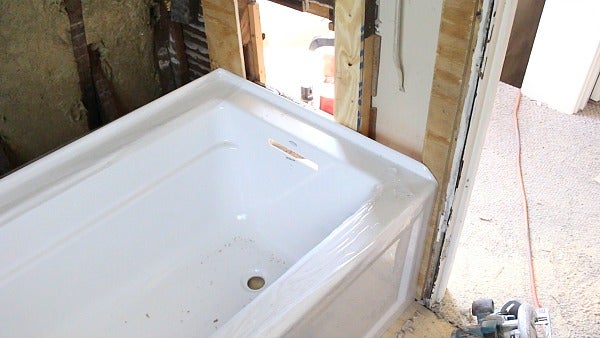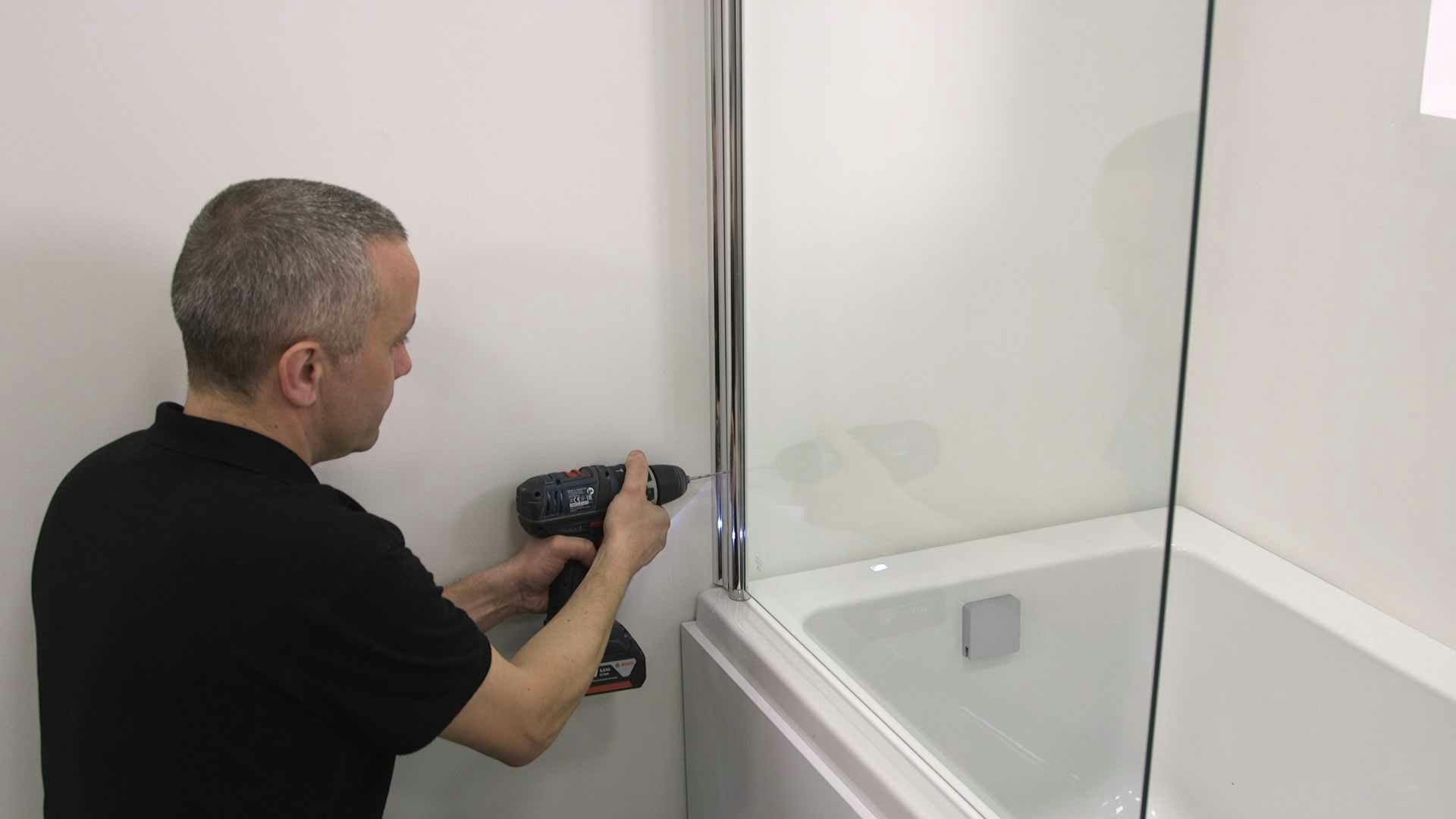Just How to Install a Bathtub Yourself: Removing as well as Replacing.
Just How to Install a Bathtub Yourself: Removing as well as Replacing.
Blog Article
We have uncovered this great article relating to Installing A Bathtub listed below on the web and believe it made perfect sense to discuss it with you on this site.

Mounting a tub isn't exactly rocket science, yet it does need solid plumbing, woodworking, and often, tiling skills. Changing an old tub with a brand-new one is likewise a reasonably challenging task. If the old tub is easily accessible, the job can relocate rapidly; if you need to open a wall surface to remove the old bathtub and position the brand-new bathtub, the job is much harder. In either situation, the task is within a house handyman's abilities, although you will require an assistant to vacate the old tub as well as embeded in the new one. Make certain you have certified on your own for the job as well as fit attempting it. As opposed to working with a professional to take control of a halfway-completed project, it is much better to take into consideration using one before you start. Opportunities are you may require a professional plumber to make tube connections.
This short article will certainly help you mount a new tub in your washroom if you have already gotten a brand-new tub as well as don't require to transform the setup of your previous water supply pipes.
Your tools as well as product checklist ought to make up the following:
Removing Old Touches
If you require to replace old taps with new ones as a part of your setup, after that the first thing you must do is separate the water. After doing so, turn on the taps to drain any water remaining in the system. The process of removing the existing taps can be quite troublesome because of the limited accessibility that is frequently the situation.
Utilize a basin wrench (crowsfoot spanner) or a tap tool to undo the nut that links the supply pipes to the taps. Have a cloth ready for the staying water that will come from the pipes. When the supply pipes have actually been gotten rid of, make use of the very same tool to loosen the nut that holds the taps onto the bath/basin. You will require to quit the solitary faucets from transforming throughout this procedure. As soon as the faucets have been removed, the holes in the bath/basin will have to be cleaned of any old securing substance.
Before moving on to fit the new taps, contrast the pipeline links on the old taps to the brand-new taps. If the old faucets are longer than the brand-new faucets, after that a shank adapter is required for the new taps to fit.
Fitting New Touches
If the tails of the brand-new faucets are plastic, then you will need a plastic connector to prevent damages to the string. One end of the port fits on the plastic tail of the tap as well as the other end provides a link to the current supply pipelines.
If you need to fit a monobloc, after that you will certainly need decreasing couplers, which connects the 10mm pipeline of the monobloc to the common 15mm supply pipeline.
Next, place the faucet in the installing hole in the bath/basin making sure that the washing machines remain in place in between the tap and the sink. Safeguard the tap in position with the maker offered backnut. Once the faucet is safely in place, the supply pipelines can be linked to the tails of the taps. The faucets can either be linked by using corrugated copper piping or with regular tap connectors. The previous type needs to be linked to the tap finishes first, tightening just by hand. The supply pipelines can later on be connected to the other end. Tighten up both ends with a spanner after both ends have been connected.
Mounting the Bathtub
Making use of the two wooden boards under its feet, position the bathtub in the called for setting. The wooden boards are handy in uniformly spreading the weight of the tub over the area of the boards rather than focusing all the weight onto four tiny factors.
The next objective is to make certain that the tub is leveled all round. This can be attained by inspecting the spirit level and also adjusting the feet on the bath tub up until the spirit level checks out level.
To mount taps, fit the bottom of the outermost flexible faucet port to the appropriate supply pipeline by making a compression join; after that do the exact same for the various other tap.
Activate the water system and inspect all joints and brand-new pipework for leaks and also tighten them if required. Load the tub and likewise examine the overflow outlet and also the typical electrical outlet for leaks.
Finally, take care of the bathroom paneling as explained in the manufacturer's user's manual. Tiling and also sealing around the bath tub should wait up until the bathtub has actually been made use of a minimum of when as this will resolve it right into its final placement.
Preparing for the Setup
To start with, the supporting framework supplied with the bath must be fitted (if required) according to the producer's guidelines. Next, fit the taps or mixer to the bath tub. When fitting the tap block, it is important to ensure that if the faucet comes with a plastic washer, it is fitted in between the bathroom and the taps. On a plastic bathroom, it is additionally sensible to fit a supporting plate under the taps system to stop strain on the tub.
Fit the versatile faucet ports to the bottom of both faucets using 2 nuts as well as olives (occasionally provided with the bathtub). Fit the plug-hole outlet by smearing mastic filler round the sink outlet hole, and after that pass the electrical outlet via the hole in the bath. Use the nut supplied by the maker to fit the plug-hole. Check out the plug-hole electrical outlet for an inlet on the side for the overflow pipeline.
Next, fit the end of the versatile overflow pipe to the overflow electrical outlet. Afterwards, screw the pipeline to the overflow face which need to be fitted inside the bathroom. Make sure you use all of the provided washing machines.
Link the catch to the bottom of the waste electrical outlet on the bath tub by winding the thread of the waste outlet with silicone mastic or PTFE tape, and screw on the trap to the outlet. Connect the bottom of the overflow tube in a similar manner.The bathroom must currently prepare to be suited its last placement.
Tiling Around the Bathtub
In the area where the bath fulfills the floor tile, it is necessary to secure the joins with a silicone rubber caulking. This is important as the fitting can move enough to break a rigid seal, triggering the water to permeate the wall between the bath and the tiling, resulting in problems with dampness and possible leaks to the ceiling below.
You can choose from a variety of coloured sealers to assimilate your components and also installations. They are offered in tubes as well as cartridges, and can sealing voids approximately a size of 3mm (1/8 inch). If you have a bigger space to fill, you can fill it with spins of drenched paper or soft rope. Keep in mind to always fill the bathtub with water before sealing, to allow for the activity experienced when the bathtub remains in use. The sealant can crack rather very early if you do not take into consideration this motion before sealing.
Conversely, ceramic coving or quadrant floor tiles can be utilized to edge the bath or shower tray. Plastic strips of coving, which are easy to use and reduce to dimension, are also easily readily available on the marketplace. It is recommended to fit the tiles making use of waterproof or water resistant adhesive and also cement.
Bathtub Installation
How Important Is A Bathtub To Your Home?
High-quality baths, showers, and other bathroom updates are necessary when considering a smart investment in your home. It’s a room that you go to every day and one that is constantly being used by guests.The bathroom is one of the top trafficked rooms in a home and also one of the most valuable in terms of home resale.
Install Piping Before Tub
You will be using your existing drain and waste vent system, but pipes required include the hot and cold water supply lines and a pipe leading to a shower head. A mixing valve and shower head are also needed. Air chambers may be required.
Position the Tub
Lower the tub into place so that the continuous flange fits against the wall studs and rests on 1’x4' or 2’x4' supports. Anchor the tub to the enclosure with nails or screws inserted through the flanges into the studs.
NOTE: Remember, bathtubs and shower stalls may require support framing. A bathtub filled with water is extremely heavy, so check building codes and framing support before installing the tub.
Assemble Drain Connections
Assemble the bathtub drain connections by connecting the tub overflow with the tub drain above the trap, not beyond it. The trap will have a compression fitting that screws over the arm of the overflow assembly.
Place a Pipe For the Shower Head
First, locate a brass female threaded winged fitting and attach it to a framing support via a screw or a nail. Then run a pipe up the wall for the shower head. Sweat or solder the other side of the brass fitting to the top of the pipe.
Attaching Hot and Cold Water Lines
Attach your water lines for both hot and cold by sweating these directly into the hot and cold ports of the mixing valve. The mixing valve will be how water enters the tub’s system, not by the pipes themselves.
Install the Spout
Extend a piece of 1/2 inch pipe, or whichever length is specified in the manufacturer’s instructions, for the tub spout. Sweat on a male threaded fitting at the end of the pipe or use a brass nipple of the proper length and a 1/2 inch cap.
NOTE: At this point you should have your rough-in plumbing work inspected before proceeding further.
Check For Leaks
Restore the water pressure and check the drain connection and the supply pipes for any sign of leaking.
estore the Bathroom Wall
Replace the wall with moisture-resistant drywall as a base for your wall covering. Seal the joints between the wall and your new tub with silicone caulk as protection against water seepage.
https://www.berkeys.com/2016/12/02/bathtub-installation-dallas/

I am just very interested by How to Install a Bathtub Yourself and I'm hoping you liked the new blog entry. Are you aware of somebody who is excited by A Step-by-Step Guide to Installing a Bathtub? Please feel free to share it. Thank-you for taking the time to read it.
Book Instantly Report this page